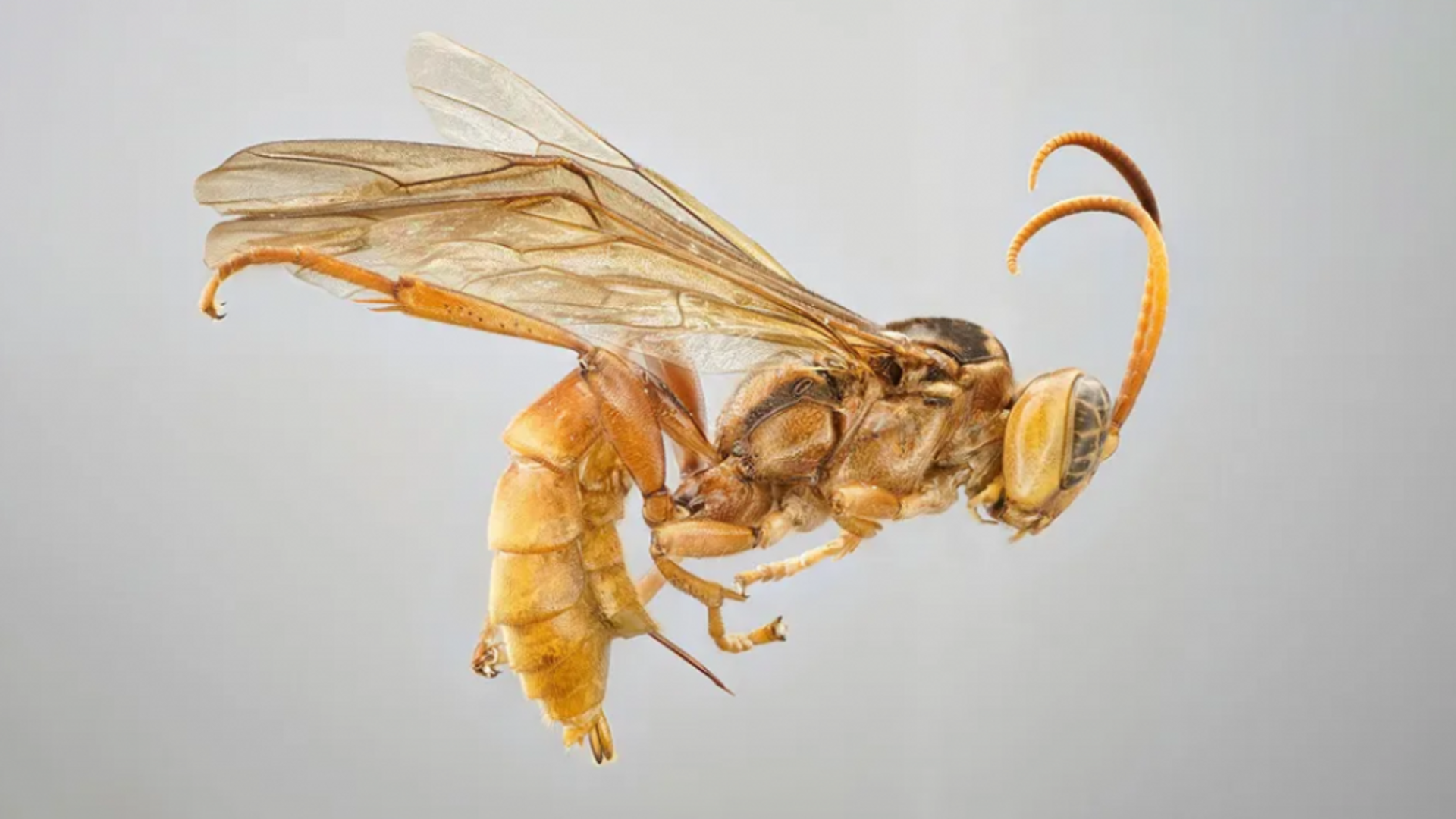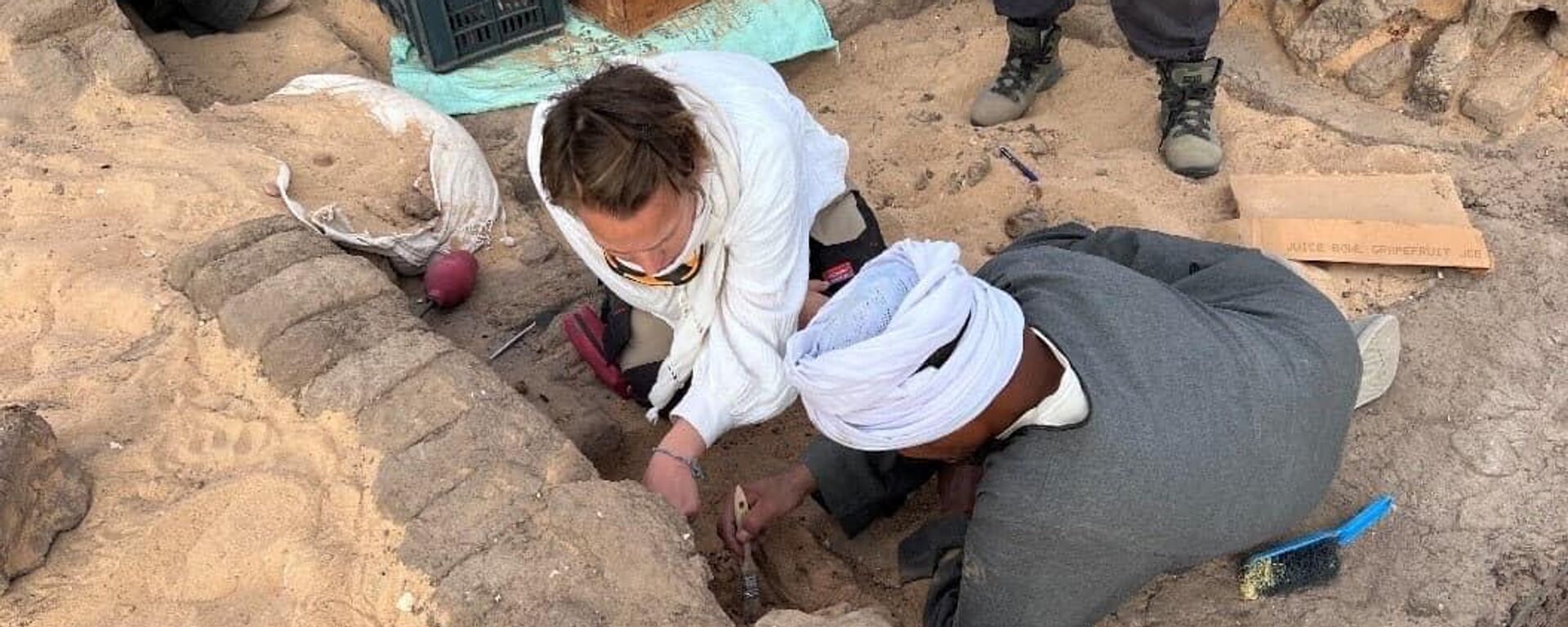https://en.sputniknews.africa/20231014/fly-like-a-bee-sting-like-a-bat-giant-headed-vampire-wasp-discovered-in-the-amazon-1062800242.html
Fly Like a Bee, Sting Like a Bat: Giant-Headed Vampire Wasp Discovered in the Amazon
Fly Like a Bee, Sting Like a Bat: Giant-Headed Vampire Wasp Discovered in the Amazon
Sputnik Africa
The researchers came across this alien-like parasite in the Allpahuayo-Mishana National Reserve in Peruvian Amazon, one of the most biologically diverse... 14.10.2023, Sputnik Africa
2023-10-14T18:51+0200
2023-10-14T18:51+0200
2023-10-14T18:51+0200
international
animals' protection
animals
biology
peru
latin america
south america
science
viral news
https://cdn1.img.sputniknews.africa/img/07e7/0a/0e/1062800713_0:2:1025:578_1920x0_80_0_0_e35fa6bdfa0c766608ad903f2b7281c2.png
Scientists in South America have discovered a new species of wasp that stings, sucks blood and lays larvae under the skin of its prey.A new species discovered in Peru has been dubbed Capitojoppa amazonica by biologists. The species name is a combination of the words "capito," meaning large bulb, and "joppa," because the new wasp resembles wasps of the genus Joppa.Brandon Claridge, a doctoral candidate in biology at Utah State University, and his colleagues discovered a strange wasp species as part of a long-term study. They set up large, tent-like traps that catch flying insects in the undergrowth of the rainforest.The eerie bright yellow creature can grow up to 2 centimeters, the biologist said. However, there is good news, as Capitojoppa poses no danger to humans. "Xenomorphs" favor caterpillars, beetles and spiders. Capitojoppa probably feeds not only on a dead host, but after puncturing a victim, these wasps suck hemolymph, a blood-like fluid found in the body of insects, from the wound.According to the Live Science, Claridge's team discovered another 108 new species using traps on the ground.
https://en.sputniknews.africa/20231002/jars-of-5000-year-old-wine-discovered-in-egypt-1062484616.html
peru
latin america
south america
Sputnik Africa
feedback@sputniknews.com
+74956456601
MIA „Rossiya Segodnya“
2023
Maxim Grishenkin
https://cdn1.img.sputniknews.africa/img/07e7/0a/17/1063018107_0:0:1104:1103_100x100_80_0_0_03090c85a11f5d2e8a19cf1d989443c9.jpg
Maxim Grishenkin
https://cdn1.img.sputniknews.africa/img/07e7/0a/17/1063018107_0:0:1104:1103_100x100_80_0_0_03090c85a11f5d2e8a19cf1d989443c9.jpg
News
en_EN
Sputnik Africa
feedback@sputniknews.com
+74956456601
MIA „Rossiya Segodnya“
Sputnik Africa
feedback@sputniknews.com
+74956456601
MIA „Rossiya Segodnya“
Maxim Grishenkin
https://cdn1.img.sputniknews.africa/img/07e7/0a/17/1063018107_0:0:1104:1103_100x100_80_0_0_03090c85a11f5d2e8a19cf1d989443c9.jpg
international, animals' protection, animals, biology, peru, latin america, south america, science, viral news
international, animals' protection, animals, biology, peru, latin america, south america, science, viral news
Fly Like a Bee, Sting Like a Bat: Giant-Headed Vampire Wasp Discovered in the Amazon
The researchers came across this alien-like parasite in the Allpahuayo-Mishana National Reserve in Peruvian Amazon, one of the most biologically diverse rainforests in the world.
Scientists in South America have discovered a new species of wasp that stings, sucks blood and lays larvae under the skin of its prey.
A new species discovered in Peru
has been dubbed Capitojoppa amazonica by biologists. The species name is a combination of the words "capito," meaning large bulb, and "joppa," because the new wasp resembles wasps of the genus Joppa.
Brandon Claridge, a doctoral candidate in biology at Utah State University, and his colleagues discovered a strange wasp species as part of a long-term study. They set up large, tent-like traps that catch flying insects in the undergrowth of the rainforest.
The eerie bright yellow creature can grow up to 2 centimeters, the biologist said.
However, there is good news, as Capitojoppa poses no danger to humans. "Xenomorphs" favor caterpillars, beetles and spiders.
"Once the host is located and mounted, the female will frantically stroke it with her antennae," Claridge told the scientific journal Live Science. "If acceptable, the female will deposit a single egg inside the host by piercing it with her ovipositor [egg-laying organ]."
Capitojoppa probably feeds not only on a dead host, but after puncturing a victim, these wasps suck hemolymph, a blood-like fluid found in the body of insects, from the wound.
According to the Live Science, Claridge's team
discovered another 108 new species using traps on the ground.



